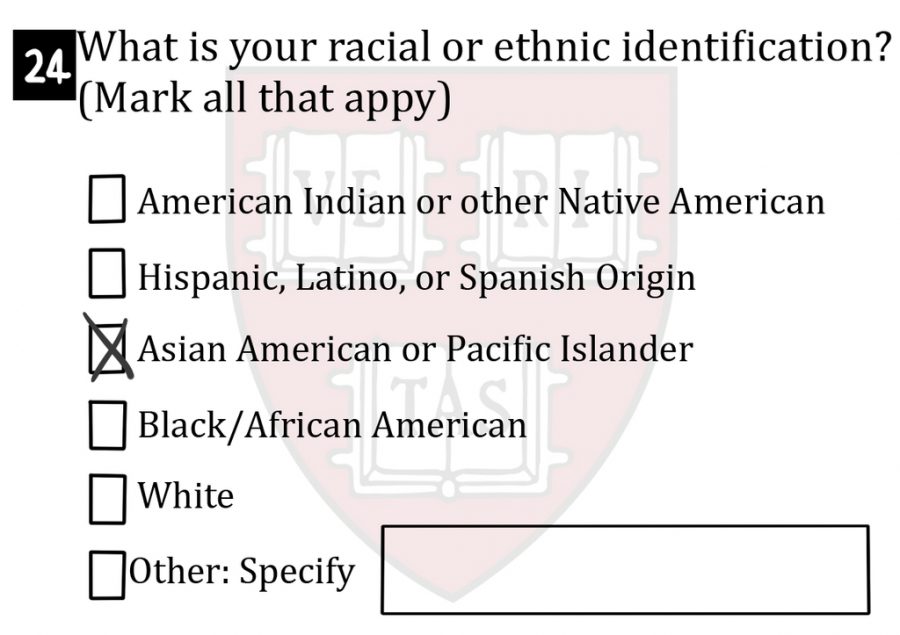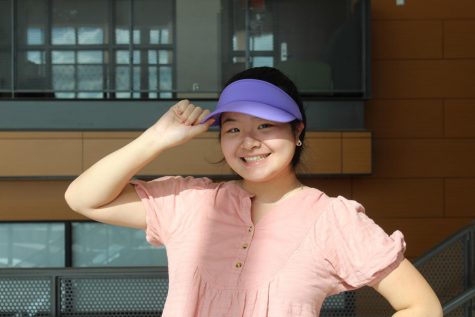Sink or swim: how affirmative action has dictated the role of Asian-American students
Two writers give their perspective on Harvard’s admission policies
November 19, 2018
Dartmouth, Yale, Columbia, and Harvard—these are just a few of the eight Ivy League schools countless students have dreamt of attending since childhood. A recurring narrative: it’s your senior year in high school and you’re about to open your Harvard decision admission letter. You’ve worked so hard for this: you have nearly a perfect score on the SAT, your weighted GPA is well above a 4.0 because of the 11 Advanced Placement classes you took—only to get rejected from Harvard? Unfortunately, that’s the case of Austin Jia, a current student at Duke University and one of the many people accusing Harvard of discriminating against Asian-Americans.
In the summer of 2018, a federal lawsuit was filed against Harvard for setting a limit on the amount of Asian-Americans in each class. Racial quotas are considered unconstitutional by the US Supreme Court, so it’s clear that the lawsuit is legitimate. Last year, 22.9% of Harvard students admitted were Asian-American according to the school’s website; however, Asian-American admissions to Harvard still made up the highest proportion of acceptance among minority races.
Many Asian-Americans excel and overachieve all over the nation, and it often doesn’t go unnoticed by their peers and postsecondary institutions. However, the level of achievement many Asian-American students strive towards might not be enough for these students to gain admission into competitive schools, as shown in Harvard’s own admissions. According to the Wall Street Journal, the trial revealed that Harvard considers a “personal factor” in their admissions, on which applicants are rated in a way that is almost completely up to the admissions officer. This, however, serves to deeply hurt Asian-American students’ admissions. Harvard’s own study of admissions shows that while Asian-applicants’ academic and extracurricular ratings in admissions far surpass those of other groups, their personal ratings are much lower.
In addition, records of comments by Harvard recruiters reveal disparaging comments against Asian-American students that play into age-old stereotypes. According to the Wall Street Journal, one admissions officer said, about an Asian American applicant, “He’s quiet, and, of course, wants to be a doctor,” and according to the New York Times, another described an Asian American applicant as a “hard worker,” but “would she relax and have any fun?” Many of the comments describe Asian Americans as very bright and diligent but lacking any exceptional qualities.
The trial also revealed that Harvard considers legacy status and parents’ donorship status in admissions, which is most often applicable to white students, who already need lower standardized testing scores and other markers of academic achievement than Asian students. White students still make up the largest proportion of Harvard’s undergraduate student body, which begs the question of whether or not Harvard really needs to curb Asian-American enrolment as it is currently doing.
Nevertheless, much of the problem is rooted in the debate over affirmative action. Although intended to be a policy which helps marginalized groups, the system of affirmative action has become corrupted and is now counterproductive.
Helping historically oppressed groups through educational and employment reparations is one of the few steps which can be taken towards diversity and an equal playing field. There’s no masking the historical discrimination of minority races in the US: the Chinese Exclusion Act of 1882 and the Three-Fifths Compromise of 1787 are among the countless legal documents which have deepened society’s ties to racism.
The problems with affirmative action can be contextualized and upheld by the lawsuit against Harvard. We think that policies which promote diversity are universally good, but when they transcend into putting the successes of some minorities over others, there is clearly a flaw in that path towards equality.
There are multiple issues with Harvard’s strategy in admissions. The first is that it upholds stereotypes. As Asian-Americans, there are countless times where someone has said to us, “Of course you’re smart – you’re Asian!” The term “model-minority” has continued to be linked to the Asian race. The generalization Harvard makes when rejecting the admissions to Asian-Americans because of their assumed “antisocial” personalities only increases the societal image of “the quiet Asian girl” or “the nerdy Asian boy.” If affirmative action is supposed to prevent stereotyping, why has it been a mechanism to defend discrimination of Asian-Americans?
The stereotype of an Asian-American student, as a child who only studies and does nothing else, and their “tiger” parents who get extremely upset when they come home with something less than an A grade, is put into new light. Considering affirmative action, this type of trend among Asian families is not only reasonable: it’s required. An Asian student has to excel far past their white, black and Hispanic peers in order to have the same chance of admission to an elite school and their parents have to go above and beyond to give them that chance. A study by Professors Thomas J. Espenshade, Chang Y. Chung, and Joan L. Walling of Princeton University showed that Asian students had to score higher on the SAT than any other racial group did in order to get admitted, sometimes by over 100 points.
There are deep societal implications of the precedent Harvard sets. Even though Asian-American students tend to score higher on standardized tests, this cannot be generalized to every Asian-American student. Making it harder for Asian-Americans to get into prestigious schools like Harvard only perpetuates the idea of the model-minority while not reciprocating the benefits earned by hard work. We are expected to uphold the stereotypes society pushes on us while repeatedly being struck down because of our race.
Despite the good intentions of affirmative action, it’s clear that it does not function in a way which supports all minorities. Unfortunately, the is-ought fallacy (meaning the assumption that things should be a certain way because they are a certain way) of affirmative action has rendered it a policy which has put the “equality” of some marginalized groups at the expense of others. We find it impractical for a policy like affirmative action to always be holistically good; however, when it gets to a point of misuse and counterproductivity, reforms must be undertaken.
To us, students are more than a race they fill in on a scantron. We are more than an ACT score or GPA. College admissions should not be a question of one minority above another— that only props up the flaws of affirmative action which perpetuate the stereotypes Asian-Americans and other minorities already suffer. Limited personal experience aside, other less well off Asian families have resorted to sacrificing basic amenities, such as new clothes, in order to gain access to the resources that will allow their children to excel. As this country goes to war with itself over its history of racism and gender inequality in higher education, Asian families across the nation have already become a casualty.




